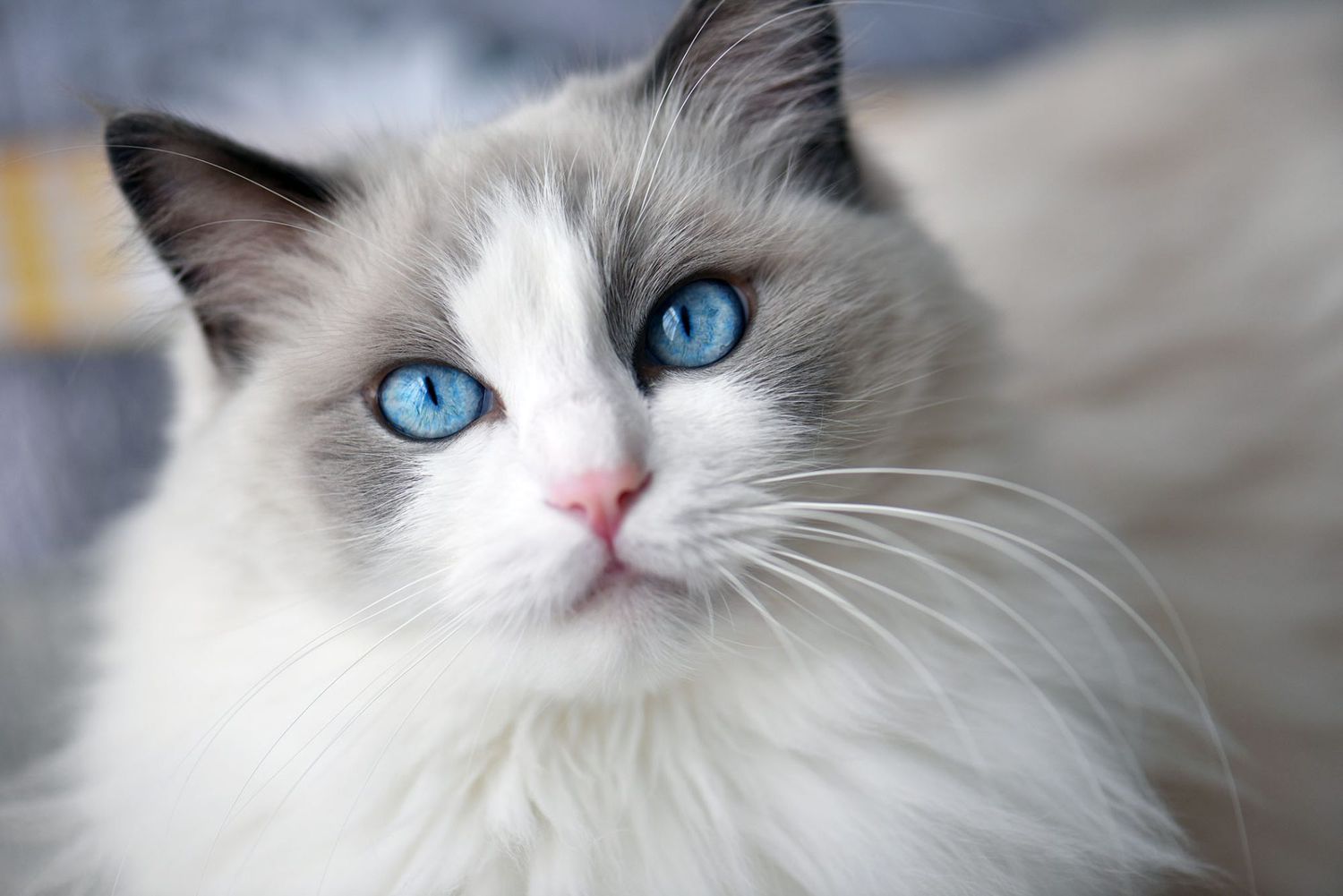
32 interesting facts about Ragdolls (a type of cat)
- 👁️ 251
Ragdolls are one of the most beloved cat breeds, cherished for their striking blue eyes, semi-long silky fur, and gentle disposition. Originating in the 1960s in California, the breed has quickly become a favorite among cat lovers for its docile and affectionate nature. Known for their tendency to go limp when picked up, much like a ragdoll, these cats have a calm demeanor that makes them excellent companions. Their large size, plush coat, and friendly personality set them apart from other breeds. Let’s explore some interesting and informative facts about Ragdoll cats that highlight their unique qualities and endearing traits.
- The Ragdoll breed was first developed in the 1960s by Ann Baker, a Persian breeder in Riverside, California.
- Ragdolls are known for their striking blue eyes, which all purebred individuals possess.
- They have a distinct color-point coat, meaning their body is light-colored with darker fur on the ears, face, paws, and tail.
- Ragdolls are one of the largest domesticated cat breeds, with males weighing between 15 to 20 pounds or more.
- The breed is named “Ragdoll” because of their tendency to relax completely and go limp when held, resembling a cloth doll.
- Ragdolls have a semi-long, silky coat that is surprisingly low maintenance due to its lack of an undercoat, which reduces matting and shedding.
- They are known for their gentle and calm demeanor, often described as “dog-like” due to their tendency to follow their owners from room to room.
- The breed matures slowly and does not reach full size and coat development until they are about three to four years old.
- Ragdolls are considered to be “puppy cats” because of their playful and sociable nature.
- They have a soft, quiet voice and are known for their chirps and trills.
- Ragdolls are indoor cats; their trusting and gentle nature makes them unsuited for outdoor life.
- This breed comes in several patterns, including colorpoint, mitted, and bicolor, with variations in color such as seal, blue, chocolate, and lilac.
- Ann Baker, the breed’s founder, created a unique pet ownership scheme in the 1970s called the “International Ragdoll Cat Association” (IRCA) which had strict standards and rules.
- Due to their relaxed nature, Ragdolls are typically good with children and other pets, making them ideal family pets.
- They are prone to certain genetic health issues, such as hypertrophic cardiomyopathy (HCM), a common heart disease in cats.
- Ragdolls are often used as therapy cats because of their gentle and affectionate nature.
- The breed achieved full recognition by the Cat Fanciers’ Association (CFA) and the International Cat Association (TICA) in the early 1990s.
- Despite their laid-back nature, Ragdolls can be quite playful and enjoy interactive toys.
- Ragdolls were first introduced to the UK in the 1980s and quickly gained popularity across Europe.
- They have a moderate energy level and enjoy a good play session but are not overly demanding of attention.
- Ragdolls are known for their loyalty and can develop a deep bond with their owners.
- The first Ragdoll cats were the result of breeding domestic longhaired white females with males that had the desired traits, such as gentle demeanor, large size, and beautiful blue eyes.
- Unlike many cats, Ragdolls are known to be more receptive to being trained, including learning to fetch and come when called.
- Due to their social nature, Ragdolls do not like being left alone for long periods.
- The breed has a longer than average lifespan, with Ragdolls living up to 15 years or more with proper care.
- Ragdolls have a relatively low incidence of shedding compared to other cat breeds.
- Their genetic history is somewhat mysterious, with some theories suggesting they have Persian, Birman, or Burmese ancestry.
- The breed’s temperament is often described as relaxed, gentle, and affectionate.
- Ragdolls were not officially recognized by major cat registries until the 1960s, making them a relatively new breed.
- Ann Baker trademarked the name “Ragdoll,” and for many years, only cats from her cattery could use the name.
- Despite their size, Ragdolls are known for their agility and can be quite playful when the mood strikes.
- The Ragdoll’s coat color and pattern can change over time, with kittens born white and developing their full color as they mature.
Ragdolls, with their captivating blue eyes and affectionate nature, have become one of the most cherished cat breeds in the world. Their unique characteristics, from their plush coats to their gentle demeanors, make them more than just pets; they’re beloved companions. The breed’s history, combined with its endearing qualities, continues to attract cat enthusiasts everywhere. As gentle giants of the cat world, Ragdolls remind us of the joy and comfort that pets bring into our lives, enriching them with unconditional love and companionship.
Ragdolls are one of the most beloved cat breeds, cherished for their striking blue eyes, semi-long silky fur, and gentle disposition. Originating in the 1960s in California, the breed has quickly become a favorite among cat lovers for its docile and affectionate nature. Known for their tendency to go limp…